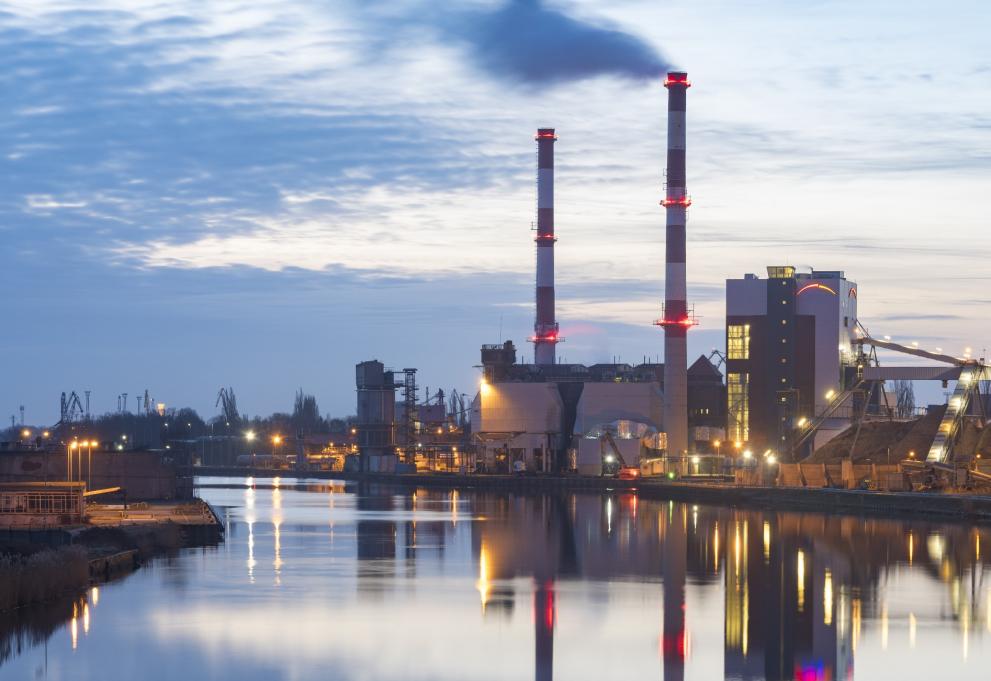
New standards on resources and emissions will help national authorities across the EU to lower the environmental impact of around 3 500 large combustion plants.
The new specifications stem from the review of the Best Available Techniques (BAT) Reference Document for Large Combustion Plants (LCP), the so-called LCP BREF, produced by the Commission's Joint Research Centre. Its BAT conclusions were voted favourably by Member States with a qualified majority and published on August 17th in the Official Journal of the EU.
The new standards have been developed through an inclusive, transparent and evidence-based process involving Member States, industry and environmental non-governmental organisations. Since 2011, over 290 experts were duly consulted on the issue.
Emission limits based on Best available techniques (BATs) conclusions
The BAT conclusions of the LCP BREF set, for the first time at the EU level, limits for the emissions to air of mercury, hydrogen chloride and hydrogen fluoride from the combustion of solid fuels in LCPs. They also tighten the existing emission limits for pollutants including sulphur dioxide (SO2) and nitrogen oxides (NOx).
Based on 2013 data, LCPs emit 46% of SO2, 18% of NOX and 39% of mercury across the EU. The adopted BAT conclusions aim at further reducing pollutant emissions, to reduce their health damage and other undesired impacts, all of which also have economic consequences. Within four years, national authorities must ensure that the permit conditions for the plants concerned are reviewed based on the new environmental standards.
Reducing environmental impacts across the LCP sector
LCPs are combustion plants with a total rated thermal input equal to or greater than 50 MW. They are operated in the energy sector (electricity and heat production) as well as in a number of energy-intensive industrial sectors such as steelworks, pulp and paper mills, the chemical industry, and gas extraction and distribution. These are the main sectors affected by the review of the LCP BREF. Apart from updating the emission limits for most pollutants and LCP categories, BAT conclusions introduce novel emission limits for large liquid-fuel-fired stationary engines and for gas turbines operated on offshore platforms. Addressing these emissions can reduce the environmental impact from many of Europe´s largest point emission sources and will help the implementation of the new National Emission Ceilings (NEC) Directive, of the Ambient Air Quality Directive (AAQD), of the EU Mercury strategy and of the Minamata Convention.
BAT conclusions are the technical basis for national authorities in EU countries to set permit conditions for LCPs. If the authorities use the BAT conclusions to set permit conditions at the lowest end of the indicated emission level ranges, this can drive a sizeable reduction of emissions from the plants subject to the new environmental standards.
In addition to standards for emissions to air, other environmental issues such as emissions to water and energy efficiency are also part of the new BAT conclusions.
Best available techniques – background information
Best available techniques (BAT) conclusions aim at achieving a high level of protection of the environment as a whole under economically and technically viable conditions. They cover not only the emission levels and other environmental performance of several (production) techniques but also include standards for how the technology is used and the way in which the installation is designed, built, maintained, operated and decommissioned.
The so-called Seville process defines the production and the adoption of the Best Available Techniques (BAT) Reference Document and its subsequent BAT conclusions.
The drafting of the BAT conclusions has been led by the European Commission's Joint Research Centre (JRC) through its European Integrated Pollution Prevention and Control Bureau (EIPPCB) and drawn up with the involvement of experts from industry, EU public authorities, environmental NGOs and the European Commission. The European Commission has adopted the revised Best Available Techniques (BAT) conclusions for large combustion plants after the positive vote of the Regulatory Committee of the Industrial Emissions Directive (IED) 2010/75/EU, which regulates emissions to air, water and soil of about 50 000 industrial installations across the EU.
The BAT conclusions for large combustion plants constitute the 12th of a series of Commission Implementing Decisions adopted under the Industrial Emissions Directive (IED). The EIPPCB is currently reviewing BAT reference documents for the following sectors: large volume organic chemical industry, waste treatment, food drink and milk, waste incineration, surface treatment using organic solvents (including wood and wood-products preservation with chemicals), ferrous-metals processing and common waste gas treatment in the chemical sector.
Related Content
BAT conclusions of the LCP BREF published on August 17th in the Official Journal of the EU
National Emission Ceilings (NEC) Directive
Ambient Air Quality Directive (AAQD)
European Integrated Pollution Prevention and Control Bureau (EIPPCB)
Details
- Publication date
- 14 September 2017
